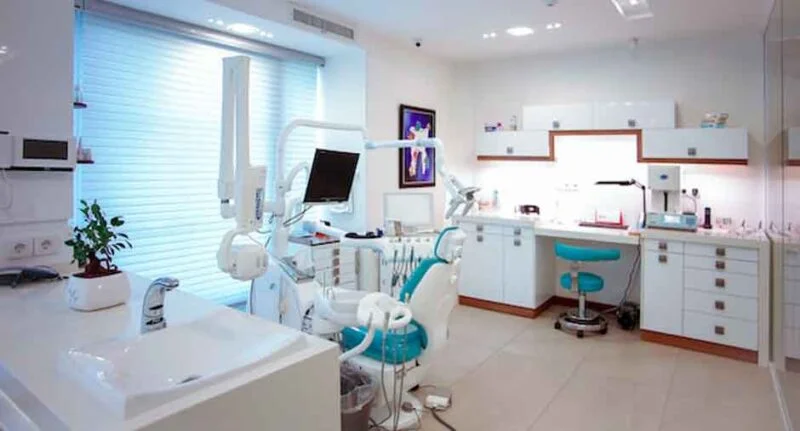
Designing a medical office exam room requires careful consideration to ensure optimal functionality and a conducive environment for both healthcare providers and patients. From the layout to the choice of diagnostic tools, every element plays a crucial role in enhancing the quality of patient care. In this guide, we will explore key aspects of office design, emphasizing the importance of creating a space that promotes efficiency, comfort, and effective healthcare delivery.
Layout and Flow:
The layout of a medical office exam room is a critical factor that profoundly influences the overall efficiency and functionality of the healthcare facility. This extends beyond mere aesthetics, encompassing strategic considerations regarding the placement of furniture, equipment, and entry/exit points. Meticulous attention to these elements ensures not only a visually pleasing environment but also one that promotes a seamless flow of patients, minimizes wait times and facilitates convenient access for healthcare professionals.
In conceptualizing the layout, thoughtful placement of furniture plays a pivotal role. Strategic positioning of examination tables, chairs, and storage units optimizes both space and accessibility. This method enhances both healthcare providers’ workflow and the overall patient experience. Furthermore, a well-considered furniture arrangement contributes to the creation of designated zones within the exam room, allowing for organized and efficient medical assessments.
Comfort and Privacy:
Patients’ comfort and privacy stand as paramount considerations in the intricate realm of medical office design. The seating arrangement, lighting choices, and overall ambiance are not just aesthetic components but pivotal contributors to cultivating a calming atmosphere. Deliberate efforts to ensure a soothing environment can significantly impact patients’ well-being during their medical consultations. Incorporating privacy measures, such as soundproofing and thoughtfully designed partitions, plays a vital role in establishing a confidential space for patient interactions. Striking the delicate balance between an open, inviting environment and maintaining individual privacy becomes the cornerstone for fostering a positive patient experience, enhancing their overall sense of well-being and trust in the healthcare setting.
Incorporating Advanced Diagnostic Tools:
Integrating state-of-the-art diagnostic tools into the medical office exam room is not only essential but transformative for ensuring accurate assessments. Tools such as digital thermometers, otoscopes, and ophthalmoscopes play pivotal roles in comprehensive patient evaluations, providing healthcare providers with invaluable insights into various aspects of a patient’s health. The seamless inclusion of these advanced tools not only enhances the precision and efficiency of medical assessments but also contributes significantly to better-informed diagnoses and the formulation of effective treatment plans. The incorporation of these cutting-edge technologies underscores the commitment to delivering high-quality healthcare by staying at the forefront of medical advancements.
Technology Integration:
In the modern era, technology assumes a paramount role in medical practice, revolutionizing the way healthcare is delivered. Integrating electronic health records (EHRs), telemedicine capabilities, and other cutting-edge technological advancements goes beyond mere innovation; it becomes an essential strategy to streamline workflow and elevate overall patient care. The thoughtful placement of outlets, charging stations, and connectivity options within the office design ensures that technology seamlessly complements rather than hinders the operational efficiency of the healthcare setting. This strategic approach not only embraces the digital transformation within the medical field but also underscores the commitment to providing patient-centered care through the effective utilization of technological resources.
Flexibility for Diverse Needs:
Medical office exam rooms should be meticulously designed with adaptability at the forefront, ensuring they can accommodate a diverse range of medical specialties and address the unique needs of patients. The incorporation of adaptable furniture, adjustable lighting, and multifunctional spaces becomes integral to creating a versatile environment that can effortlessly cater to various medical scenarios. This flexibility not only enables healthcare providers to personalize the exam room setup based on specific medical requirements but also ensures a tailored and responsive approach to patient care. The consideration of such versatile design elements underscores a commitment to delivering comprehensive healthcare solutions that are adaptable to the evolving needs of both medical professionals and the patients they serve.
Conclusion:
In conclusion, the design of a medical office exam room is a nuanced and comprehensive undertaking that necessitates meticulous attention to detail and an unyielding commitment to patient-centric care. By emphasizing layout efficiency, comfort, seamless technology integration, flexible adaptability, and sustainable practices, healthcare facilities can transcend the mere functional aspects of their spaces, creating environments that elevate the overall healthcare experience.

